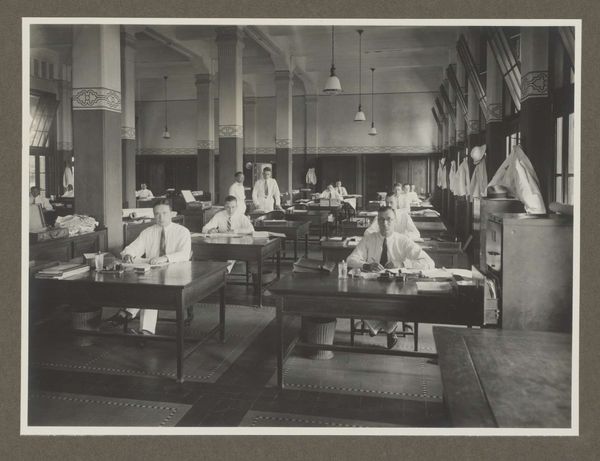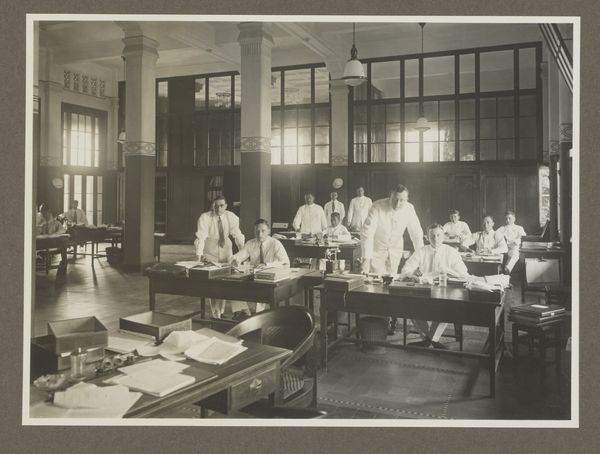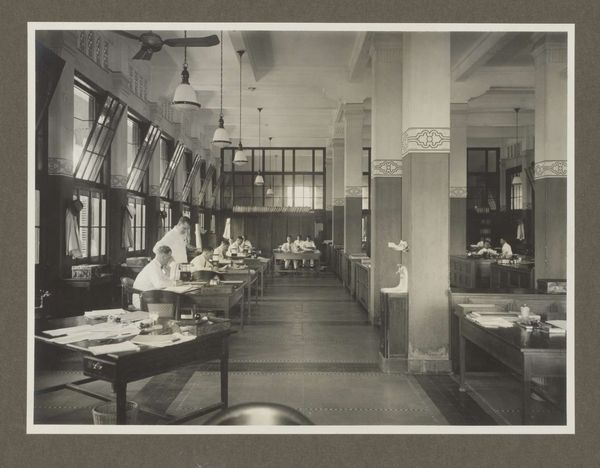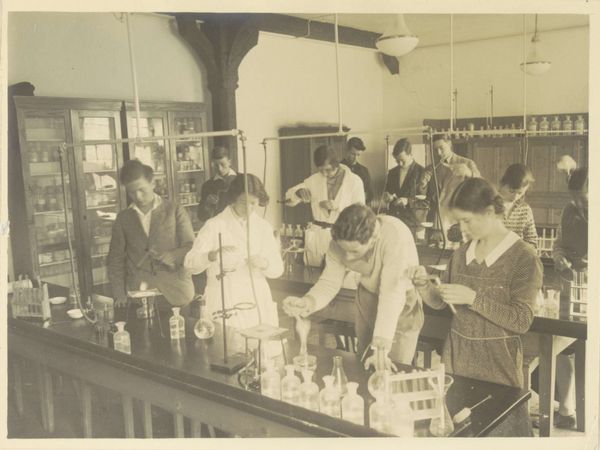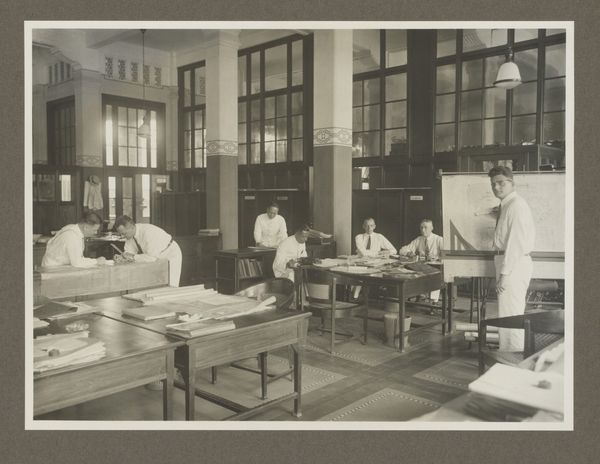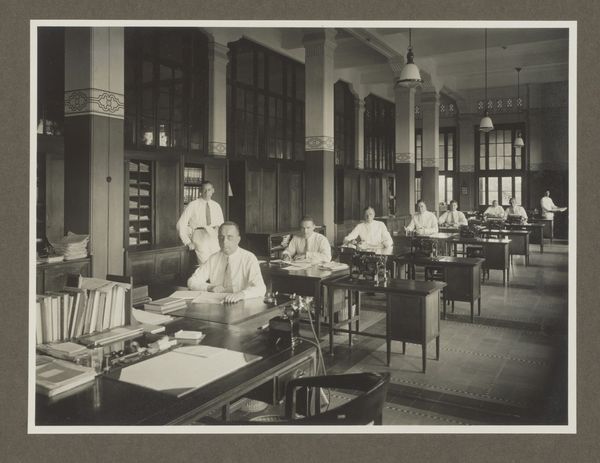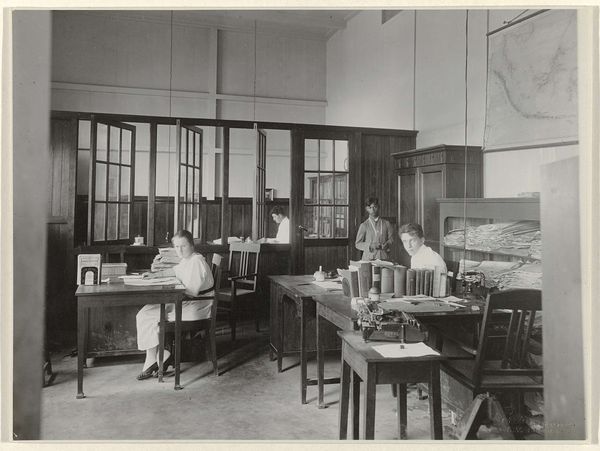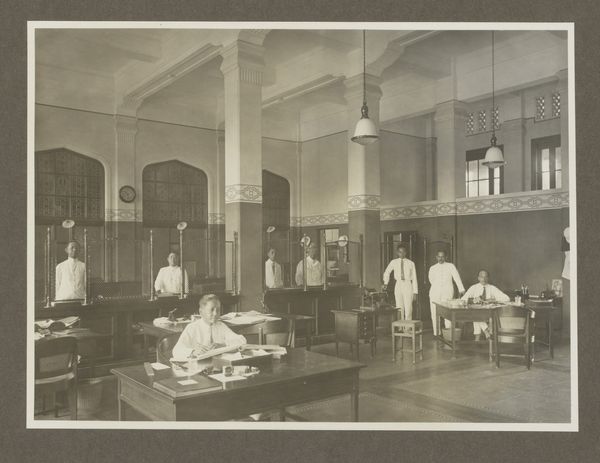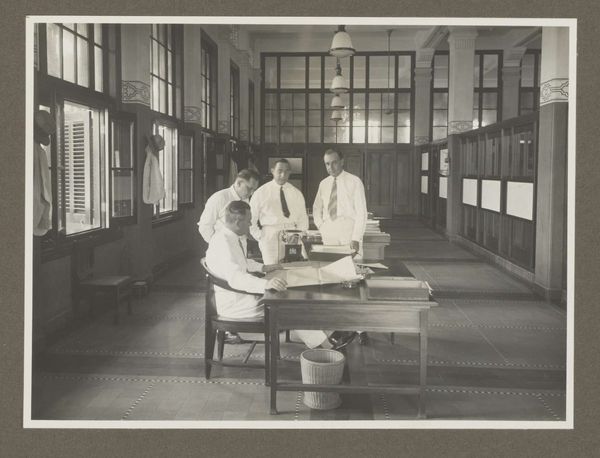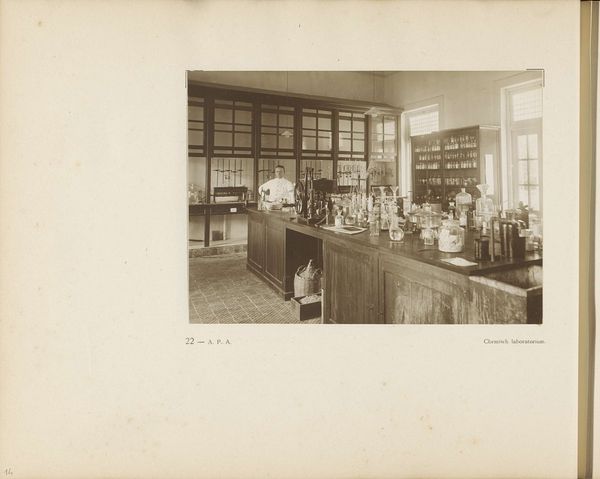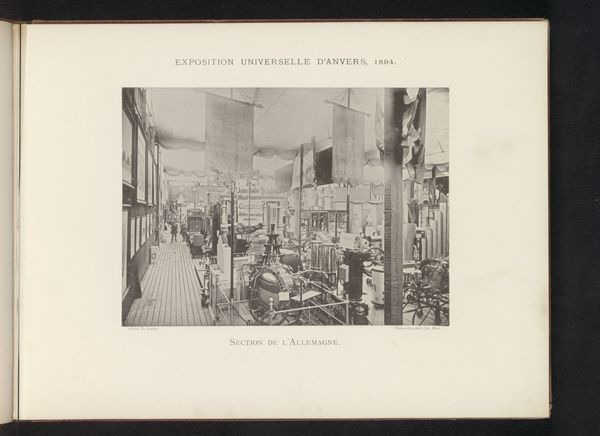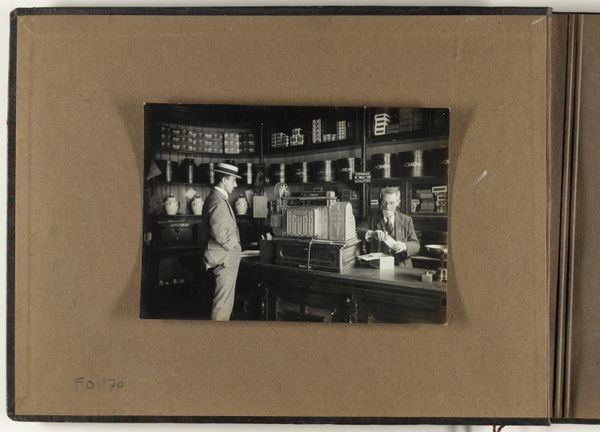
photography, gelatin-silver-print
#
photography
#
gelatin-silver-print
#
genre-painting
#
modernism
#
realism
Dimensions: height 170 mm, width 230 mm
Copyright: Rijks Museum: Open Domain
Editor: Here we have "Laboratorium," a gelatin-silver print by Atelier Kurkdjian, dating from 1931 to 1934. The image presents a laboratory scene with several figures. I am immediately drawn to the formal wear of these people doing science, such as white lab coats with headdresses in this architectural, yet busy lab space. What societal observations can we make about the setting captured in this image? Curator: This image speaks volumes about the visual and social construction of scientific work in the early 20th century, particularly within the context of colonialism, since it's difficult to ignore the men's headwear. The sterile environment, the scientists in lab coats, the presence of both European and non-European figures - it all points to a meticulously constructed image of modernity and progress, presented to a very specific public for very specific reasons. How do you see this image functioning as a tool of power or control, considering the era and the likely intended audience? Editor: I didn't think about power. Maybe the image was for stockholders for this foreign project, since it attempts to convey order, scientific advancement, and maybe, most importantly, a safe workplace. This probably also suggests something about photographic practice as constructing social imagery rather than reflecting social reality, right? Curator: Precisely! Photographs are not neutral records but powerful tools for shaping public perception. We have to look at what they were intended to do and how they participated in a larger framework of representation. It highlights how the very act of depicting labor becomes a form of labor itself – the labor of constructing an image that aligns with certain socio-political objectives. Editor: Wow, that is much more layered than what I saw initially. It gives a different perspective to question photography of this era. Curator: Absolutely! Seeing photographs in their socio-political context allows a richer reading of art.
Comments
No comments
Be the first to comment and join the conversation on the ultimate creative platform.
